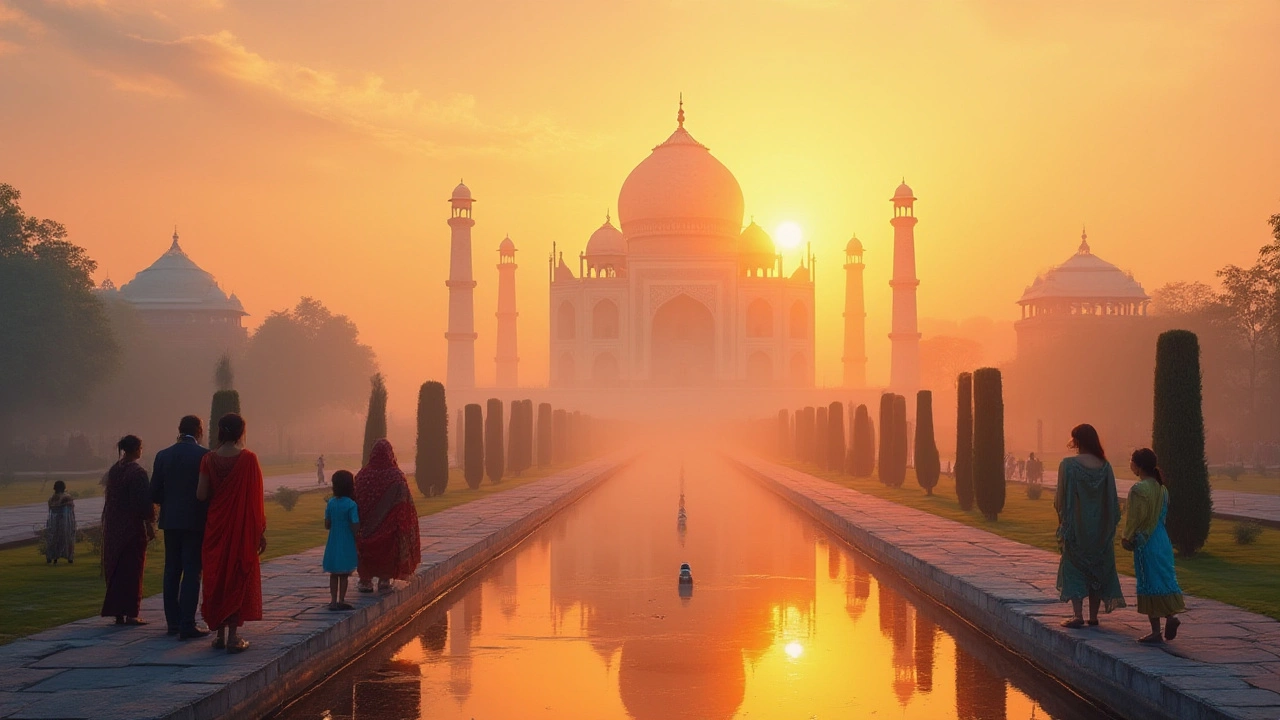
Get the ultimate guide to the best month for visiting the Taj Mahal. Learn about Agra's weather, crowd levels, photography tips, and how to enjoy India’s most iconic landmark.
When navigating Taj Mahal crowd, the flow of visitors around the iconic marble mausoleum in Agra. Also known as visitor influx at the Taj, it can turn a simple photo stop into a waiting marathon, understanding its patterns saves you hours. The crowd isn’t random; it encompasses peak visiting hours, follows seasonal tourism spikes, and reacts to local events. Most travelers arrive between 9 am and 11 am, when the monument opens, causing the longest queues. Late afternoon, especially after 4 pm, sees a dip, but sunset crowds surge for the golden‑hour view. Knowing these rhythms lets you pick a window that matches your schedule and patience level.
Today’s Taj Mahal, a UNESCO World Heritage site and one of the world’s most photographed structures draws tourists from every continent, so the Agra tourism ecosystem has built a whole set of services to handle the flow – from ticket kiosks that offer early‑bird slots to audio guides that keep you moving while you learn. Effective crowd management, the planning and real‑time control of visitor numbers includes timed entry tickets, separate lanes for domestic and international visitors, and staff‑guided dispersal during festivals. These tools reduce bottlenecks, but they also create new timing rules you need to follow. For instance, a timed ticket purchased online lets you skip the main queue, yet you must still arrive within a 30‑minute window or lose the slot.
First, book a timed entry for the earliest slot you can manage; the 8 am opening slot is usually the quietest because most day‑trippers are still on the road. Second, consider visiting on a weekday in the off‑season (October to February) – the best time to visit, based on weather and crowd data aligns with cooler temperatures and thinner crowds. Third, use the lesser‑known south‑gate entrance if you have a pre‑booked ticket; this gate often has a shorter line than the main east‑gate. Fourth, bring a reusable water bottle and wear comfortable shoes – the walk from the parking area to the marble platform is about 300 meters and can feel longer when you’re waiting.
Finally, keep an eye on real‑time updates. The Taj’s official app posts live crowd density maps, and local travel blogs share daily snapshots of queue lengths. By checking these sources before you leave home, you can decide whether to shift your arrival by an hour or head straight to the garden area for a quieter experience. With these habits, the Taj Mahal crowd becomes a predictable element rather than a surprise obstacle, letting you focus on the breathtaking architecture and the love story behind it. Below you’ll find a curated set of articles that dive deeper into each of these tips, from detailed ticket‑booking guides to seasonal travel calendars, so you can plan a smooth, memorable visit.

Get the ultimate guide to the best month for visiting the Taj Mahal. Learn about Agra's weather, crowd levels, photography tips, and how to enjoy India’s most iconic landmark.